
Educational adventures in the tropics: discovering rainforests in Borneo
Photographing fluorescent flowers, searching for frogs and shooting tropical cucumbers out of trees: this is only a small part of the course Tropical Biodiversity and Field Methods. For this class, master’s students biology traveled to Malaysian Borneo for two weeks to gain experience in fieldwork. For many, this is their first time in the tropics.
For Roderick Bouman too, one of the teachers and collection manager at the Hortus botanicus Leiden, the course was his first tropical experience nine years ago. ‘It even was my first trip outside Europe. I needed a passport for the first time,’ Bouman recalls. Fortunately, the destination is very suitable for beginners: a not-too-big rainforest area, full of colour-coded trails and with the Danau Girang Field Station as a base of operations.

‘It’s a nice area for first-timers,’ says Bouman. ‘It’s not a 100 per cent wild, but you still encounter leeches and mosquitoes – people often need to recover a little bit from that.’ Not surprisingly, students were not allowed to enter the jungle by themselves and the nearby Kinabatangan River was off-limits too, because of the high water level and the crocodiles.
Cramming at the crash course
Before the students ventured into the Bornean forests, they first had to attend lectures on the basics of tropical biodiversity for a week. Besides Bouman, these classes were taught by James Byng (director of the TU Delft Hortus Botanicus), Roel Wouters (biologist), and Jeremy Miller, Hans ter Steege, Tinde van Andel, Jorinde Nuytinck and Vincent Mercks (researchers at Naturalis).
‘The students learn that a rainforest is made up of different layers, so that they can recognise those in Borneo,’ says Bouman. ‘It really was a crash course: what does the world of plants look like, the forest structure, the variety of fungi, which insects and mammals will we encounter there. And we talk about the history of Earth: how does a tropical rainforest come into being?’
And while those lectures are very interesting, it goes without saying that the students couldn’t wait to leave for Borneo. ‘That’s the meat of the course: it is why students are so eager to join,’ Bouman smiles.
Disturbed rainforest
From the city of Sandakan in northern Borneo it takes two hours by car and one hour by boat to reach the Danau Girang Field Station. There, the students and their five supervisors are immediately photographed and posted to Instagram. At this field station, researchers study the nature in this piece of rainforest, tucked away in a bend of the river.
Bouman: ‘This area is what we call “secondary rainforest”: the truly big trees have been cut down between the sixties and eighties, which is why a lot of pioneer species can be found here today.’ Besides that, this area is surrounded by oil palm plantations. It is no surprise that a lot of the research that is conducted here focuses on how the local biodiversity reacts and adapts to the disturbance of the forest and the nearby plantations.
‘You see a lot of large animals, such as proboscis monkeys, hornbills and sometimes orangutans, but that’s because the forest has been compressed to such a small area by the oil palm plantations. So the reason behind it leaves a sour taste,’ says Bouman.
Botanical Extravaganza
During the first week, students could set off with the teachers, who organised daily workshops that they had to work out on the spot. ‘You arrive and think: well, I’m curious what’s flowering right now!’ Bouman explains. ‘James Byng of the TU Delft Hortus Botanicus and I organised botanical walks – our “Botanical Extravaganza” as we called it. Each day we tried to follow a different trail in order to encounter different plants. During the walk, we explained how to identify plants and how to recognise early vegetation for example.’
With a large catapult, students could try to get materials down from the trees. You use it to shoot a weighted bag attached to a string into the tree – you have to aim well to sling it around a branch. Then you pull the two pieces of string and you hope that the branch yields. In this way, students managed to collect branches, leaves and fruits such as the ‘tropical cucumber’.
-
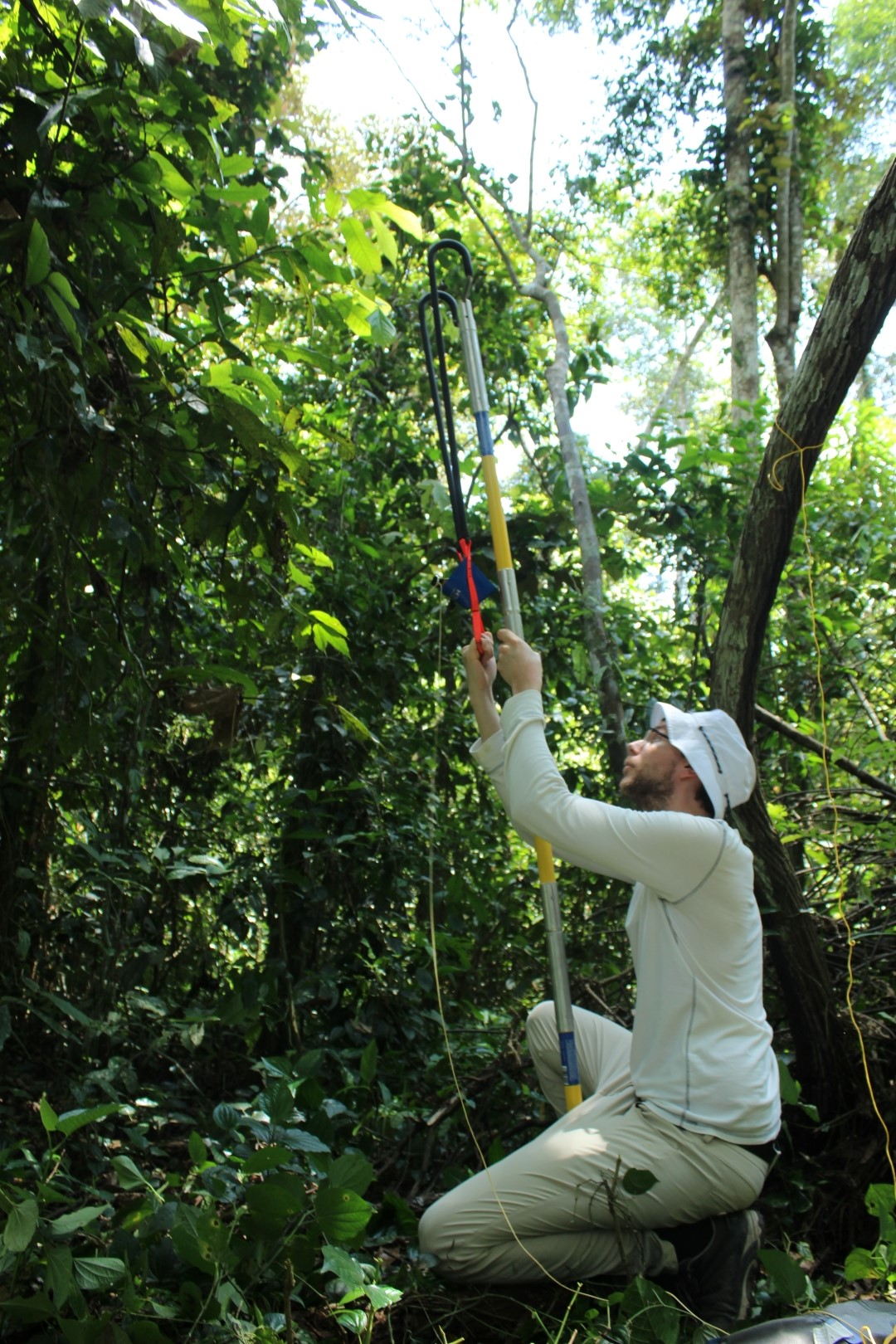
The catapult was used to collect botanical materials. -
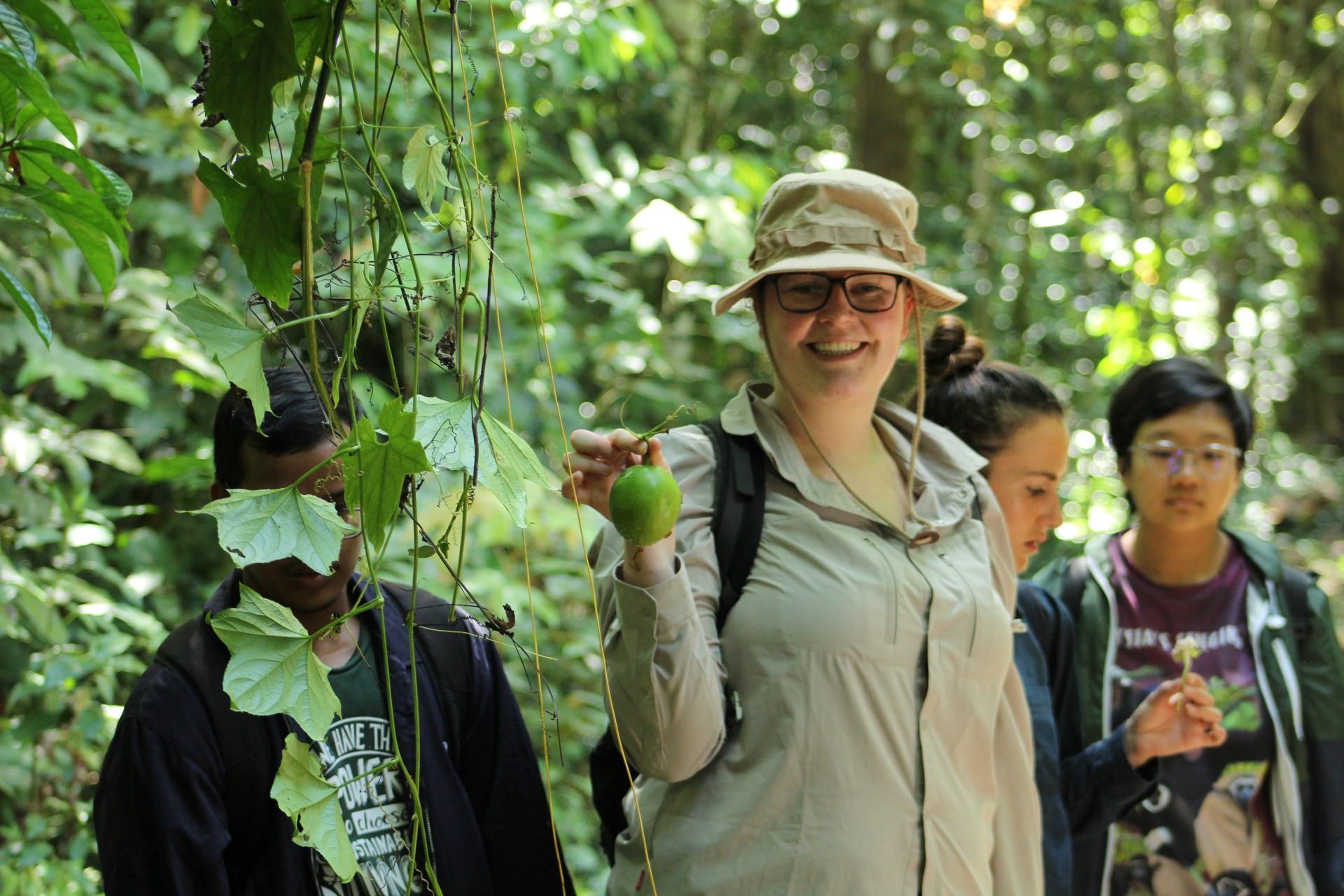
For example, this 'tropical cucumber' was shot down from the trees. -
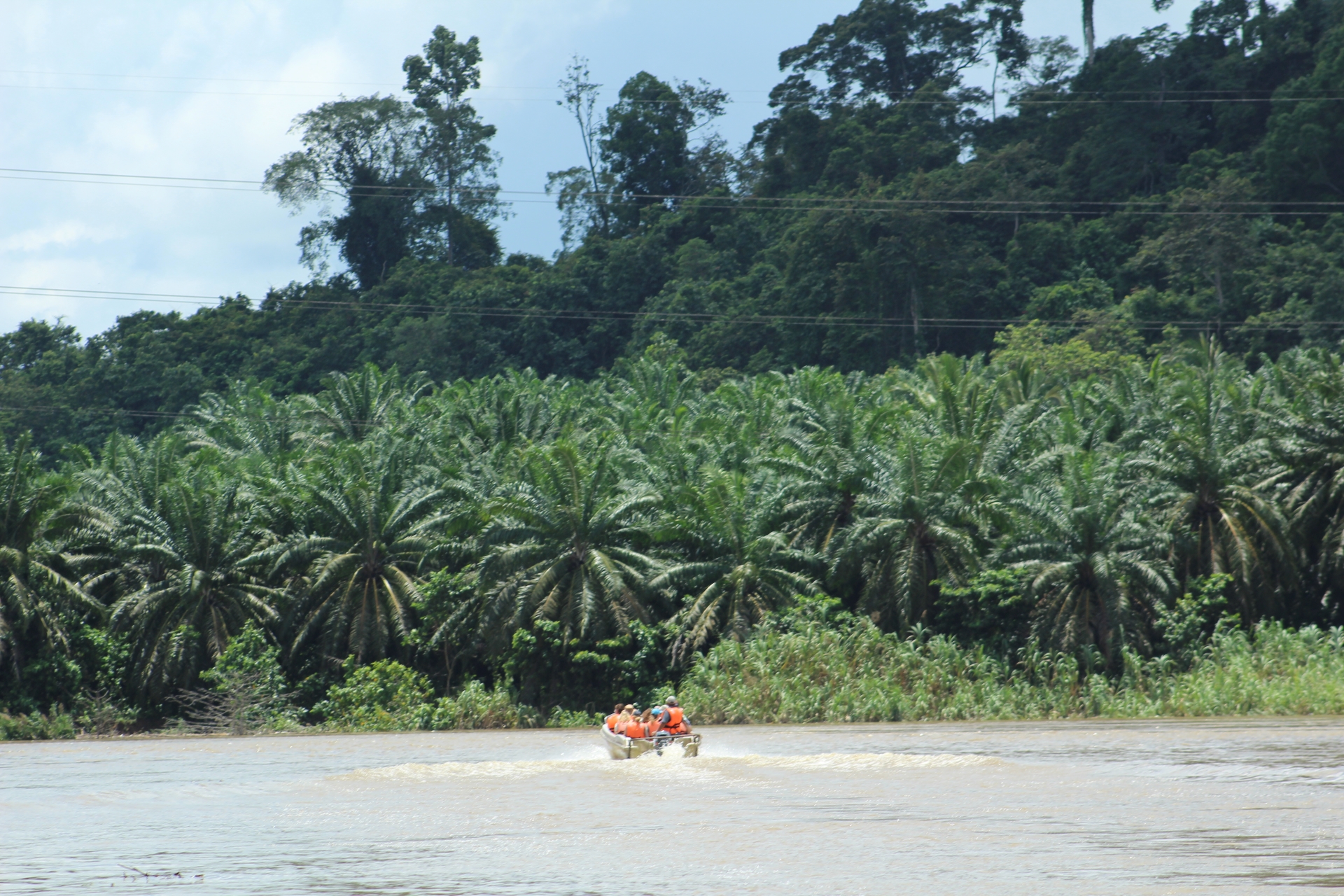
The area around the Danau Girang Field Station is surrounded by oil palm plantations. -
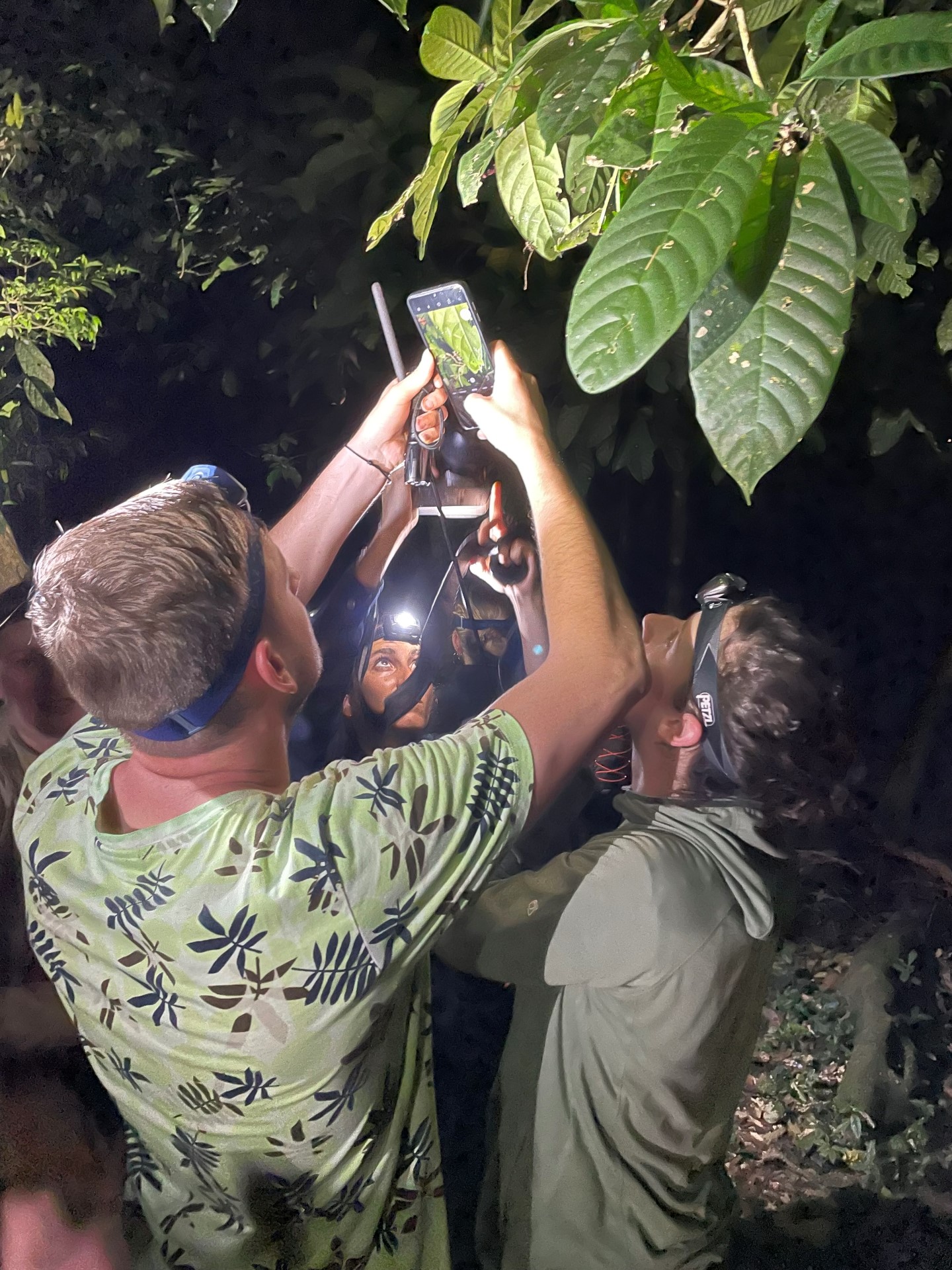
Students constantly encountered interesting biodiversity... -
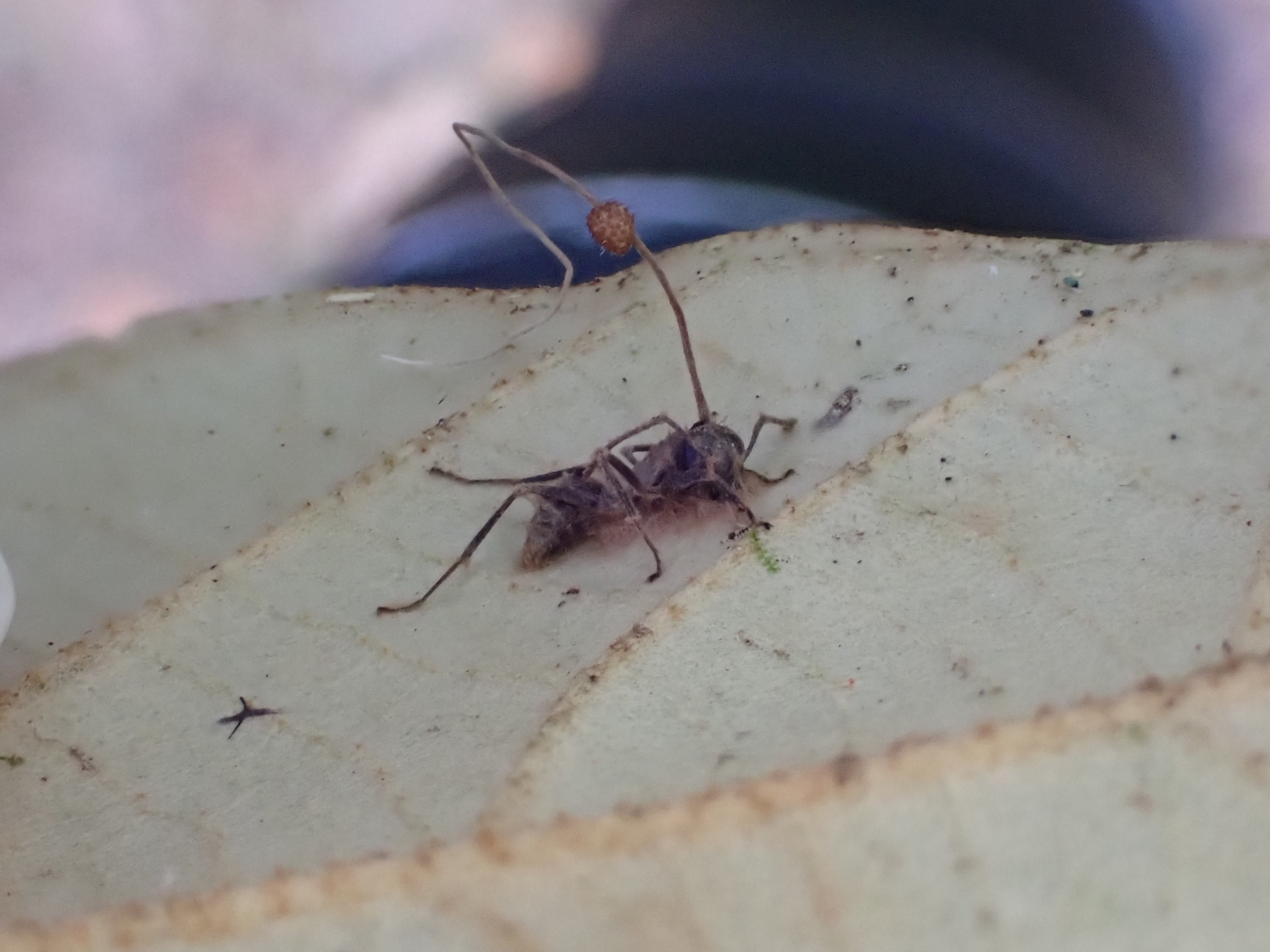
... such as this insect, infected with a Cordyceps fungus.
Time-lapse improvisation
In the second week, the students were tasked with setting up, carrying out and presenting their own research project, of course on the topic of biodiversity. The teachers stood by to answer any questions.

Bouman himself didn’t sit around doing nothing either. There were enough materials to collect and reference pictures to take. He also encountered a peculiar flower which bloomed at night. ‘We saw it hanging all week, buds bulging, and we just sat there waiting. We hoped it would bloom before we left.’ Then one morning, a student found a piece of the plant on the ground and that gave rise to solving the mystery: it was a species of the genus Barringtonia. ‘With the little bit of wi-fi that was available to us, we downloaded a flora to have a key. Then we discovered that the plant was a Barringtonia macrostachya, which blooms at night. During daytime, we only saw round buds, but after dinner the flowers were fully open.’ Using ultraviolet light, Bouman took remarkable night photos of the plant, which was very popular among the students.
The idea emerged to record a time-lapse video. ‘You have to improvise,’ a smiling Bouman recalls. ‘The first night we attempted to create a time-lapse, we couldn’t get the GoPro to work, because the student who brought it was out and about. So I had to just stand there for two hours with my own camera, taking three photos every five minutes.’ Fortunately, the GoPro was ready for use the next night: it was taped to a tree, while a headlamp was fixed onto another tree – the rainforest becomes pitch dark at night, after all.
Due to the selected cookie settings, we cannot show this video here.
Watch the video on the original website or
Forest giants of 70 metres tall
But the fluorescent nighttime bloomer wasn’t even the most spectacular part of the trip, if you ask Bouman. His highlight was the Octomeles sumatrana (Tetramelaceae family), a tree that may be rather common locally, but which is not often in pictures. These giants can grow over 70 metres tall.
Trees of that size did not occur yet in the area around the Danau Girang Field Station, but they do occur in the Sepilok nature park, where the group spent their last day. That forest is less disturbed and therefore more mature. The students could walk across a canopy bridge between the trees – only halfway the true forest giants, some of which are estimated to be 800 to 1000 years old.
‘We wanted to show another kind of forest as well,’ says Bouman. ‘So that the students understand that what they experienced at the Danau Girang Field Station is actually very disturbed. Sepilok is more mature, almost primary, and therefore more biodiverse: you can find many more different species there.’
Photos/video: Roderick Bouman
Text: Emma Knapper
